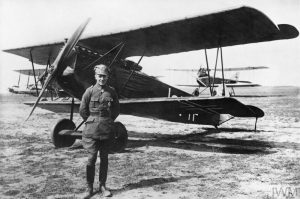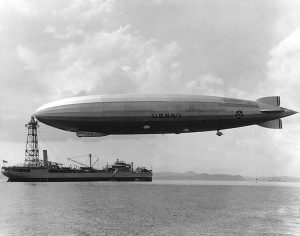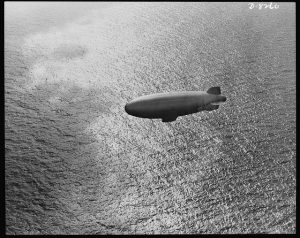Airships, Blimps, Dirigibles, and Zeppelins
In the weeks since we got home from our Big Road Trip back in June,* I’ve been immersed in the years between the end of World War I and the rise of the Nazis in Germany. One of the things that has captured my imagination is how fascinated people were by aviation in those years.
The two big aviation stories from this period are the ones you’ve heard about: Charles Lindbergh’s non-stop flight across the Atlantic in 1927 and the crash of the zeppelin the Hindenburg at Lakehurst Naval Air Station in 1937. (Sigrid Schultz wasn’t in the right place at the right time to report on either event directly, but two days after the Hindenburg disaster she had a front page story reporting Germany’s response to the crash, and their intention to resume air service to the United States by year end. The headline screamed across the page: RUSH NEW GERMAN AIRLINER. )
Lindbergh’s success and the Hindenburg disaster were not the only aviation stories to make international headlines in the period between the wars. There were other attempts to sail across the Atlantic, to the Arctic, around the world. (The Chicago Tribune sponsored one such flight in 1929: the round trip flight from Chicago to Berlin of the ‘Unting Bowler. The airship went down in the Hudson Straits on the first leg of the journey. The ship was lost; the crew survived. ) Aviators went missing. Even the release of new airships was news.
Robert McCormick, the Chicago Tribune’s owner and publisher, was a huge aviation booster, so Sigrid Schultz reported lots of stories on aviators as they went through Berlin and on German advances in aviation technology. (Helped by the fact that her father was a friend of Graf von Zeppelin, the inventor of the eponymous zeppelin.) She even took a spin in the air with World War I ace, Ernst Udet, early in her career. **
- Franco-Prussian War hero and aviation pioneer Ferdinand Graf von Zeppelin
- Oberleutnant Ernst Udet with his Fokker DVII.
After awhile, I realized that I wasn’t quite clear on the difference between airships, blimps, dirigibles, and zeppelins. Assuming that some of you might be in the same hot air balloon, I offer you the following:
- An airship is a gas-filled aircraft that is steerable. (Unlike, say, a hot air balloon.) A dirigible, from the Latin dirigere, to direct, is an airship with a classical education. It started as an adjective—as in dirigible aircraft. (And in fact, dirigible is still used as an adjective meaning steerable, though not by anyone I know personally.)
- Both blimps and zeppelins are airships/dirigibles. But blimps are not zeppelins, and vice versa, though they look a lot alike to my untrained eye:
- United States Navy zeppelin 1931
- United States Navy blimp, 1944
- A blimp does not have a rigid internal structure. Blimps get their shape from the pressurized gases that fill them and make them lighter than air.
- A zeppelin has a rigid metal frame, so it keeps its shape whether filled with pressurized gas or not. The rigid frame made them suitable for longer trips and zeppelins because a important form of commercial transportation between the wars. They routinely made transatlantic flights. One enormous zeppelin, the Graf Zeppelin, flew around the world in 1929. (As you can probably guess, this was a huge newspaper story.)
Just to add to the confusion: the famous Goodyear blimps are in fact now zeppelins. The company switched out its fleet in 2014, though the company, and everyone else, still calls them blimps. There are some cases where being technically correct is more trouble than it’s worth.
*Stops to check calendar. Yep. June. Time flies when you’re sitting at your desk writing.
**He offered to turn that metaphorical spin into a literal spin and fly some aerobatics with her. She declined.
NOTE: If you’re reading this in email, click on the title and go to the browser if you want to watch the footage of the Hindenburg crash, click on









Thank you for your research into this History. Since I worked with an International Air carrier over 13 years, I do find that I have found this Industry a fascinating work environment. You might say What’s in a word.’ Then there is, “A Rose is a Rose, is a Rose” or “A Rose by any other name.” Ah, linguistics….You have given an interesting twist this conundrum of what is really a Flying Machine!. To which I can only sing, “Come Josephine in my Flying Machine..”‘ etc. Which I have done to my great enjoyment all be it not in such a conveyance.
Love it!